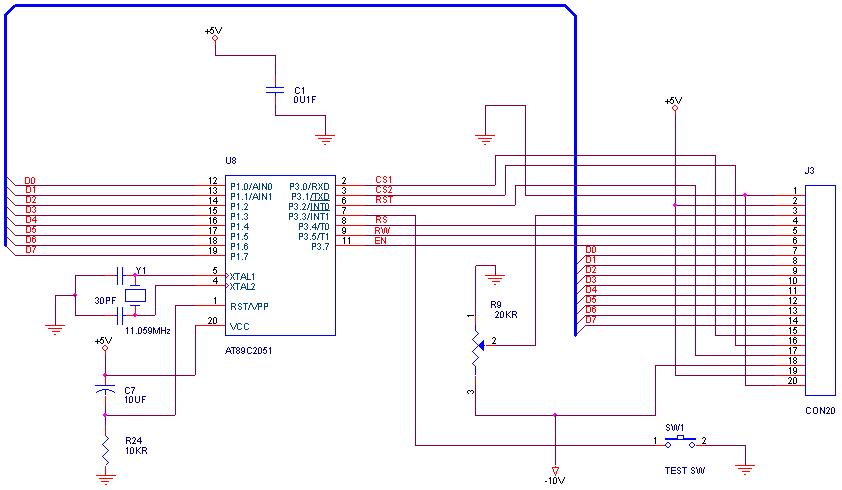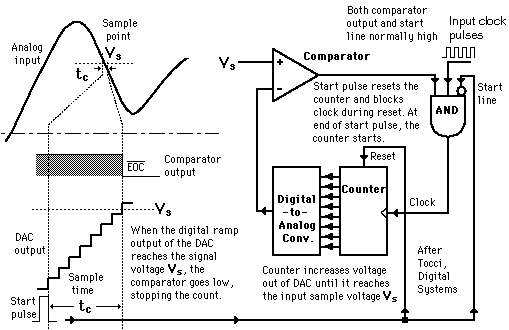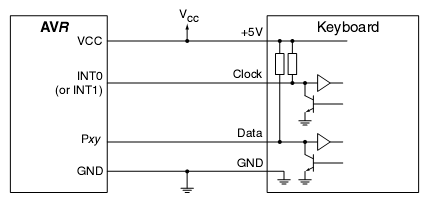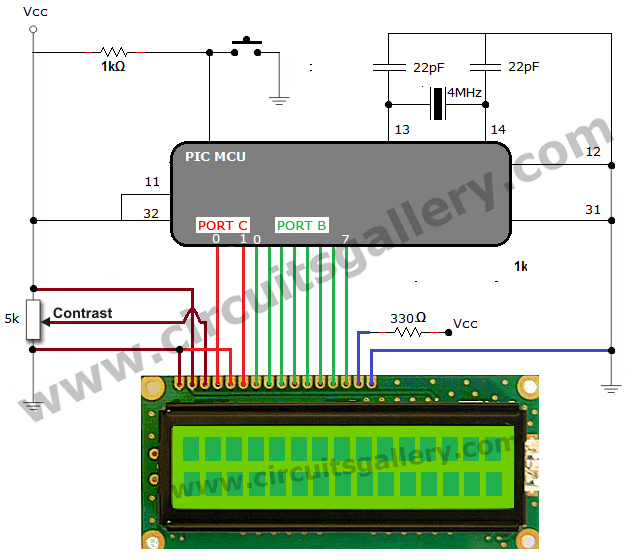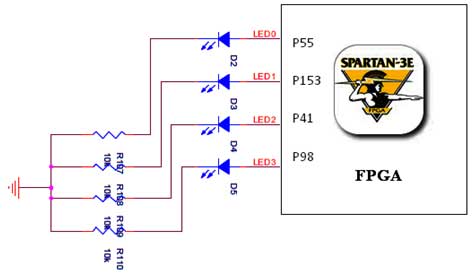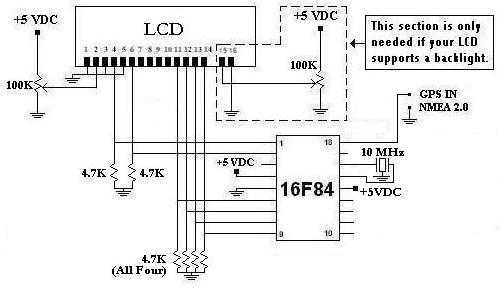
LCD Interfacing with AVR-Atmega8 and Atmega32
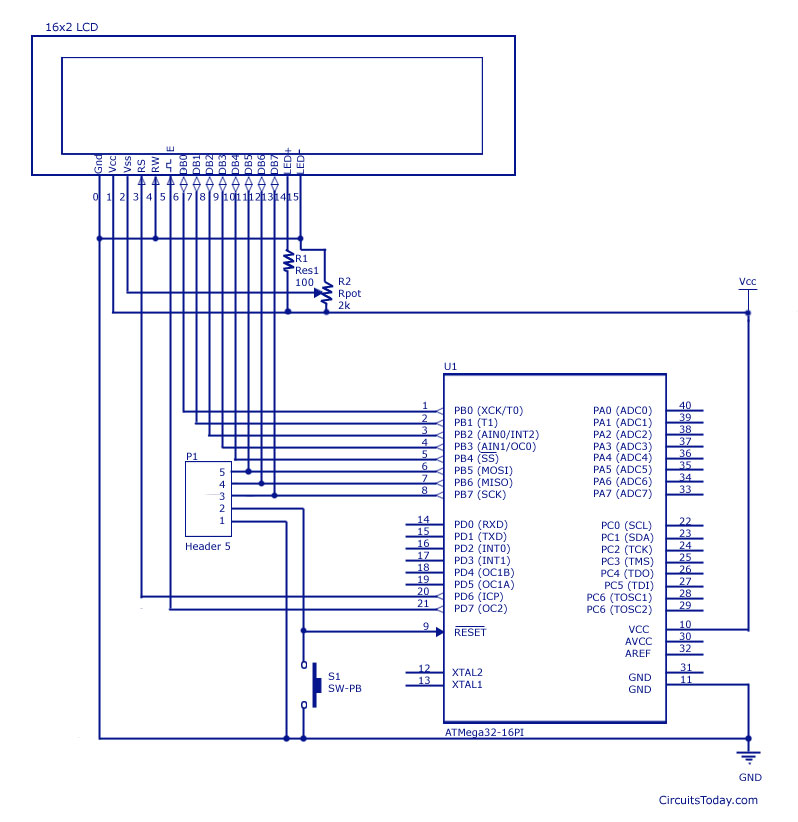
Interfacing an LCD display with AVR microcontrollers, specifically the Atmega8 and Atmega32, including a circuit diagram and embedded C code for implementation.
The interfacing of an LCD display with AVR microcontrollers, such as the Atmega8 and Atmega32, is a common task in embedded systems design. This process typically involves connecting the LCD to the microcontroller's GPIO (General Purpose Input/Output) pins, configuring the pins for data and control signals, and writing a program in embedded C to control the display.
The circuit diagram for this setup generally includes the following components:
1. **LCD Display**: A standard 16x2 character LCD is commonly used. It has 16 pins, including 8 data pins (D0 to D7), 3 control pins (RS, RW, E), and power supply pins (VSS, VDD, VO).
2. **Microcontroller**: The Atmega8 or Atmega32 microcontroller, which serves as the brain of the operation, controlling the LCD based on the programmed instructions.
3. **Resistors and Potentiometer**: A potentiometer is often used to adjust the contrast of the LCD. Additionally, pull-up or pull-down resistors may be used for stability in certain configurations.
4. **Power Supply**: The circuit requires a stable power supply, typically 5V, to ensure proper operation of both the microcontroller and the LCD.
In terms of programming, the embedded C code will typically include functions to initialize the LCD, send commands, and display characters or strings. The initialization sequence is crucial for setting up the LCD in the desired mode (4-bit or 8-bit), and it usually involves sending specific commands to configure the display settings.
The structure of the code will include:
- Header files for AVR libraries.
- Definitions for control and data pins.
- Functions for initialization, sending commands, and writing data to the display.
- A main function that initializes the LCD and demonstrates its functionality by displaying text.
This comprehensive approach ensures a successful interface between the LCD and the AVR microcontrollers, allowing for effective data presentation in various embedded applications.Interfacing LCD Display to Avr micro controllers-Atmega8 and Atmega32 with circuit diagram and code/program using embedded C to download.. 🔗 External reference
The interfacing of an LCD display with AVR microcontrollers, such as the Atmega8 and Atmega32, is a common task in embedded systems design. This process typically involves connecting the LCD to the microcontroller's GPIO (General Purpose Input/Output) pins, configuring the pins for data and control signals, and writing a program in embedded C to control the display.
The circuit diagram for this setup generally includes the following components:
1. **LCD Display**: A standard 16x2 character LCD is commonly used. It has 16 pins, including 8 data pins (D0 to D7), 3 control pins (RS, RW, E), and power supply pins (VSS, VDD, VO).
2. **Microcontroller**: The Atmega8 or Atmega32 microcontroller, which serves as the brain of the operation, controlling the LCD based on the programmed instructions.
3. **Resistors and Potentiometer**: A potentiometer is often used to adjust the contrast of the LCD. Additionally, pull-up or pull-down resistors may be used for stability in certain configurations.
4. **Power Supply**: The circuit requires a stable power supply, typically 5V, to ensure proper operation of both the microcontroller and the LCD.
In terms of programming, the embedded C code will typically include functions to initialize the LCD, send commands, and display characters or strings. The initialization sequence is crucial for setting up the LCD in the desired mode (4-bit or 8-bit), and it usually involves sending specific commands to configure the display settings.
The structure of the code will include:
- Header files for AVR libraries.
- Definitions for control and data pins.
- Functions for initialization, sending commands, and writing data to the display.
- A main function that initializes the LCD and demonstrates its functionality by displaying text.
This comprehensive approach ensures a successful interface between the LCD and the AVR microcontrollers, allowing for effective data presentation in various embedded applications.Interfacing LCD Display to Avr micro controllers-Atmega8 and Atmega32 with circuit diagram and code/program using embedded C to download.. 🔗 External reference
